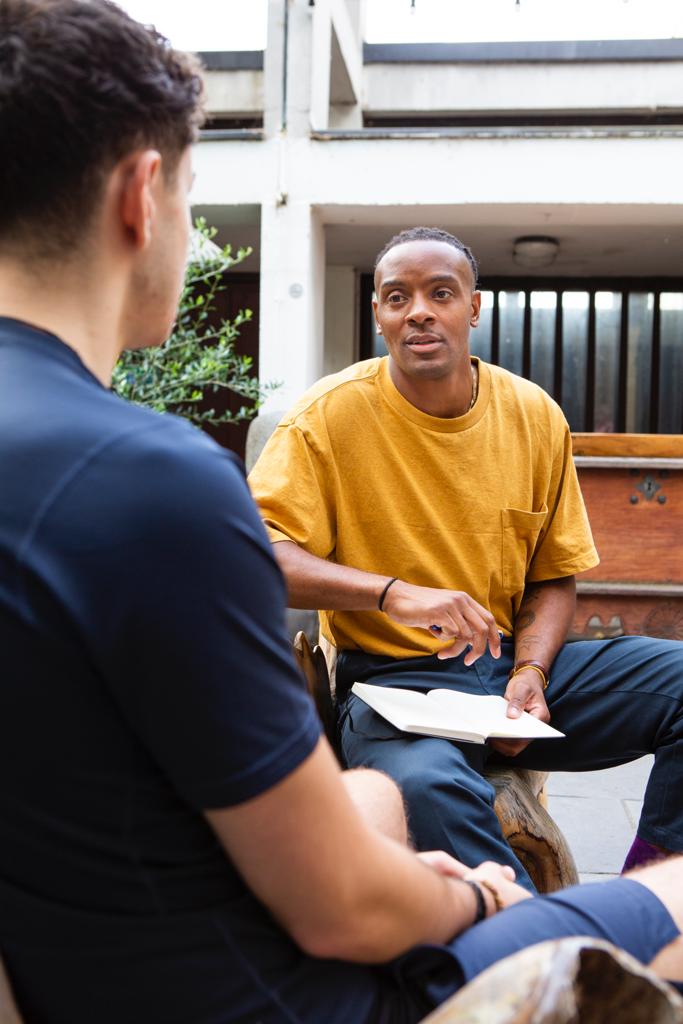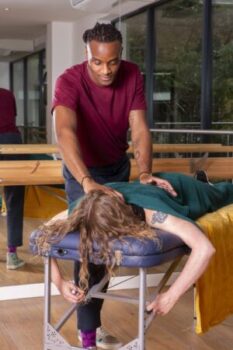Hip and groin pain
Did you go for a run or better still was driving your car a few hrs and felt a sharp pain going into your hip and groin area?? Or did you land heavily on your hip from a fall down the stairs or maybe from a sporting activity?
Did you go for a run or better still was driving your car a few hrs and felt a sharp pain going into your hip and groin area?? Or did you land heavily on your hip from a fall down the stairs or maybe from a sporting activity?
All the above actions can drive your hip and groin pain. Please do not blame your bed or your car seat and don’t rush off to get the latest standing desk or office chair. I am much cheaper and more effective than all those products.
It’s not the chair or the fault of your car or your old trainers Its YOU!!! Have an honest look at yourself and if the quick fixes have failed OR you are not happy with the medical professional’s opinion then please read on for a different approach by Kevin Powell your Movement Physiotherapist.
Two ways to categorise your hip and groin pain
- Traumatic: meaning you sustained a fall, kick or over stretched your hip or groin area located on inside of your leg from a sporting activity or other from trauma such as a car accident.
2. Insidious onset: This will occur over a period of weeks, months or years where you have noticed a slight pain around your hip and groin area and was aware of it but it didn’t really affect your daily activities.
Until over time the same activities which were causing a mild discomfort are now giving you major discomfort to the point you are unable to perform the same activities or actions.
The foam roller, the glutes exercises, the pigeon stretch and the massages from Urban massage are not hitting the spot anymore.

What structures are involved?
Zooming in approach; consider the localised structure first in the Hip and groin bones this needs to be assessed by a health professional to consider what structures are driving your hip and groin pain. This could be a Physiotherapist, Orthopaedic surgeon or a GP
Then you need to consider a zoom out approach to assess how all the 2006 bones in the body might be contributing to your problem, this is from a musculoskeletal point of view.
The spinal cord runs as far as your lower back, then continues as a bunch of nerves. This is called the ‘cauda equina’, Latin for ‘horse’s tail’, which it’s thought to resemble.
Early symptoms of a Hip and / or Groin Pain
1. Hip Pain or Groin Pain
This pain is usually located between the hip and the knee. Hip pain can be felt during exercise, sleep, or when walking. It can lead to loss of motion of the hip.
Discomfort and soreness during or after exercise is often the earliest sign of your hip and groin area is not happy. Hip pain can cause sleep problems, as the discomfort affects your natural movement at night.
Moreover, if the pain in the hip and groin prevents you from walking short or regular distances, immediately see a health professional or GP rather than just taking pain killers. This is just masking the issue and over time this will cause more wear and tear to your hip joint and groin. Pain shouldn’t be ignored as there is a reason for it and it’s your body trying to protect you from further complications in the future.
2. Stiffness
A common symptom of stiffness in the hip and groin area; you might find it difficult putting on your shoes, and crossing your legs. You may also find it difficult to bend down or to pick up something up from the ground.
3. Limping
A serious symptom of a hip problem is when you start to limp when walking. Limping can either be acute or chronic, and it can be treated with proper medical care by a Physiotherapist.
4. Swelling and Tenderness of the Hip
Another sign of a problem in the hip is swelling and tenderness. Swelling can occur internally or at the outer skin and muscle. If it becomes unbearable or doesn’t go away in a few days, immediately contact your doctor.
What should I do for my hip and groin pain?
Firstly, Activity Modification
When you feel the first occurrence of hip and groin pain you should stop all activities that is reproducing it.
Don’t just rest and think in few weeks the pain will be gone and I can get back to my sporting or gym activity.
Ask yourself why did this occur and what is my body trying to tell me?
Pain is not your enemy it’s trying to bring to your attention something which requires a bit of help.
Secondly, see a medical professional for your hip and groin pain
It’s so important to get in front of the right medical professional to get the right information. I can categorially tell you that it’s not be because you have weak glutes, core or hamstrings which is causing your hip pain.
It can’t all be about being strong and more flexible because most people are already doing that with personal trainers and yoga teachers.
So, see a Physiotherapist, osteopathy for thorough assessment with a zoom in approach assess the localised area the hip and groin. Then a zoom out approach looking at contributing factors of what could be causing your hip and groin pain.
GPs in my opinion should guide you through the list mentioned above. They shouldn’t Just give strong pain killers this is just short term, but a plan should be in place to find out why you have hip and groin pain.
Please do not just copy what your friends and family did for their hip and groin pain. Our bodies are not algorithms our bodies all have their owns story to tell in regards to injuries so it needs to be a tailored approach. Please see a health professional refer to my service page for structural approach.
Your treatment options:
1. Your Physiotherapist or other Health Professional
This might include exercises involving physical activity, movement sequences, alignment structural drills, controlling posture and stretching.
Hands on’ (manual) therapy, such as joint manipulation refer to my service page for structural approach.
Trying other health professionals such as chiropractic, osteopathy and acupuncture are all helpful if there is a structure to the treatment plan, and you are not just going for 20 sessions without any directions. You should have a treatment plan and a hypothesis of what is driving your hip and groin pain this makes the therapy session more bespoke to you.
2. Medications
If over the counter NSAIDs don’t help, your GP may offer you a higher dose of an NSAID and a medicine to protect your stomach. Or they may recommend a stronger medicine called an opioid. You should usually only take this medicine for a very short time. You may become dependent on it if you take it for a long time. Your GP may also offer you a short course of a muscle relaxant.
In my opinion I will always try the natural anti-inflammatory methods, and this is what I always say to my patients. I fully understand when your pain threshold has been reached, and you can’t sleep it is very tempting to reach for the medication. For me, most peoples pain does not respond to the list above because for the majority of the time your hip pain is the symptom and not the root cause.
Have a look at these natural foods 13 anti-inflammatory foods.
3. Imaging which your GP or health professional might request
X-ray. These images show the alignment of your bones and whether you have arthritis or broken bones. These images alone won’t show problems with your spinal cord, muscles, nerves, or disks.
MRI or CT scans. These scans generate images that can reveal herniated disks or problems with bones, muscles, tissue, tendons, nerves, ligaments, and blood vessels.
Blood tests. These can help determine whether you have an infection or other condition that might be causing your pain.
Bone scan. In rare cases, your doctor might use a bone scan to look for bone tumours or compression fractures caused by osteoporosis.
4. Injections and other procedures
Depending on the source of your pain – for example, if you have deep hip and groin pain and are unable to sleep and walk injections may be offered by orthopaedic surgeon and this should be done by guided imaging usually by a radiologist.
5 . Surgery
This is the last resort, and any conscientious orthopaedic consultant will not perform surgery if it’s not going to improve your hip and groin pain.
Surgery is always a last option and only performed when it’s an emergency which we call red flags. For example, foot drop loss of control of pulling your foot towards, away, loss function of big toe extension and loss of function bowl movements. Functional and daily activities are deteriorating.
My message to you
A lot of health professionals like to follow algorithms and love putting a label on a problem, rather than looking at the patient Infront of them and become a detective to find out why your hip and groin pain has started.
What is your label that you were given by your health professional?
Was it Osteoarthritis, Osteitis Pubis, Cam Impingement, Pincer Impingement, Piriformis Syndrome, Snapping Psoas, Trochanter Bursitis or Inguinal Strain?
The list is endless of the ailments, which you could have been labelled with. Don’t get me wrong all this can occur from a recent traumatic event or over time an injury such as a sprained ankle or stubbed toe could lead to some of the labels above.

All I am trying to say is it is fine to have a label but how do you go about working out what you need to do about your label? Is there a way to help ease this issue?
Well, yes …
Without surgery and injections and no long periods of time spent in the gym strengthening your glutes and foam rolling.
We need to assess your alignment and biomechanics by following your pelvis, sacrum, talus bone in the foot and your skull in three planes of movement.
We need to see where your body is and what we need to do help ease your symptoms.
Refer to my service page to see how I can help or send an email and ask a question?
Then link to my service page and Gary Ward page
Need a Therapist? Book an Easy One on One Session Today
ACUPUNCTURE
The central nervous system is said to be stimulated by acupuncture sites. As a result, chemicals are released into the muscles, spinal cord, and brain.
ANATOMY IN MOTION
Improve your posture and balance by tracking your movement using Anatomy in Motion activities. It shows you how your feet influence your whole posture and movement.
CRANIOSACRAL THERAPY
A gentle hands-on method that helps realign the body tissues, the bones, fascia, and muscles and helps the body to heal.
Physiotherapy Services
View More >>
Read More About Physiotherapy
Enquire today!
Please fill out the form below, and I will get back to you as soon as possible.





